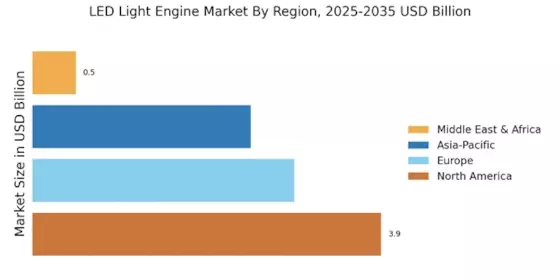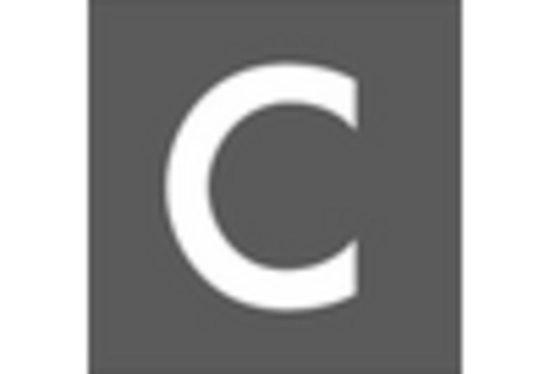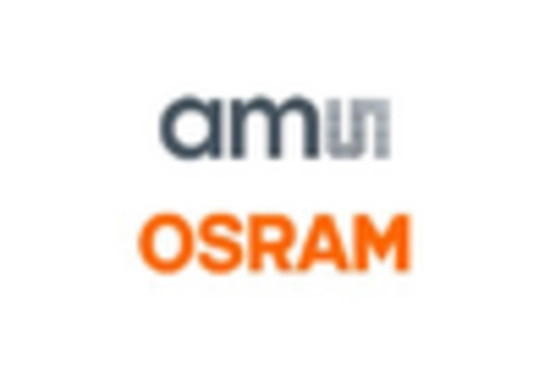Rising Demand for Energy Efficiency
The LED Light Engine Market experiences a notable surge in demand for energy-efficient lighting solutions. As energy costs continue to rise, consumers and businesses alike are increasingly seeking alternatives that reduce energy consumption. LED light engines, known for their low power usage and long lifespan, present a compelling option. According to recent data, the adoption of LED technology has led to energy savings of up to 80% compared to traditional lighting. This trend is further fueled by government incentives promoting energy-efficient technologies, which enhance the appeal of LED light engines in both residential and commercial sectors. Consequently, the focus on energy efficiency is likely to drive substantial growth within the LED Light Engine Market.
Government Regulations and Standards
The LED Light Engine Market is significantly influenced by stringent government regulations aimed at reducing carbon emissions and promoting energy efficiency. Various countries have implemented policies that mandate the use of energy-efficient lighting solutions, thereby creating a favorable environment for LED technology. For instance, regulations that phase out incandescent bulbs have accelerated the transition to LED light engines. This regulatory landscape not only encourages manufacturers to innovate but also compels consumers to adopt more sustainable lighting options. As a result, the LED Light Engine Market is poised for growth, driven by compliance with these evolving standards and the increasing awareness of environmental issues.
Increased Focus on Sustainable Practices
The LED Light Engine Market is increasingly influenced by a heightened focus on sustainability and environmentally friendly practices. As consumers become more environmentally conscious, there is a growing preference for products that minimize ecological impact. LED light engines, which are free from hazardous materials and have a longer lifespan, align well with these sustainability goals. Additionally, many manufacturers are adopting sustainable production methods, further enhancing the appeal of LED technology. Market analysis suggests that the demand for sustainable lighting solutions is likely to continue rising, thereby propelling growth within the LED Light Engine Market as stakeholders prioritize eco-friendly options.
Technological Innovations in LED Technology
Technological advancements play a crucial role in shaping the LED Light Engine Market. Innovations such as improved chip designs, enhanced thermal management, and advanced optics have significantly increased the performance and efficiency of LED light engines. These developments enable manufacturers to produce products that offer superior brightness, color accuracy, and longer lifespans. Furthermore, the integration of smart technology, such as IoT capabilities, allows for greater control and customization of lighting solutions. As these technologies continue to evolve, they are expected to attract more consumers and businesses to the LED Light Engine Market, thereby driving market expansion.
Growing Adoption of Smart Lighting Solutions
The LED Light Engine Market is witnessing a growing trend towards smart lighting solutions, which integrate LED technology with advanced control systems. This shift is largely driven by the increasing demand for automation and energy management in residential and commercial spaces. Smart lighting systems, which can be controlled remotely and programmed for various settings, offer enhanced convenience and energy savings. Market data indicates that the smart lighting segment is expected to grow significantly, with projections suggesting a compound annual growth rate of over 20% in the coming years. This trend not only enhances the appeal of LED light engines but also positions them as essential components in the evolving landscape of smart buildings.

















Leave a Comment